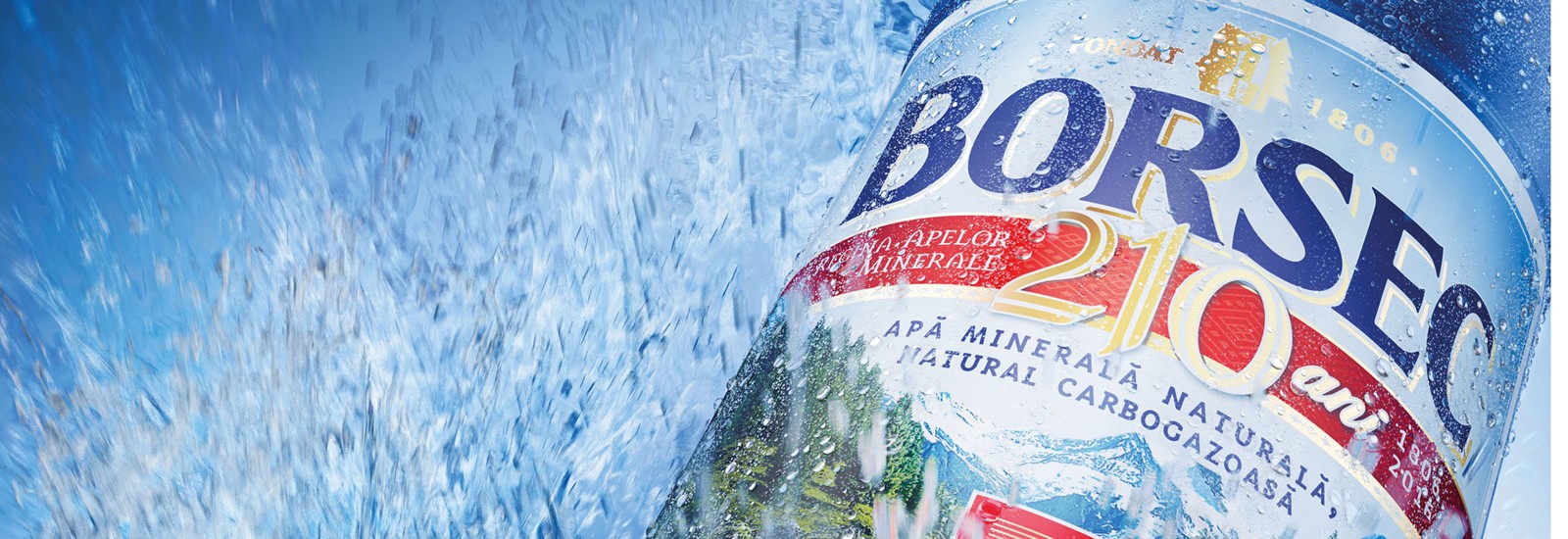Mineral Waters
Postat 16-02-2021
The genesis and the appearance of mineral waters in the form of springs are linked to the existence of depth deficiencies, to the volcanic mountain range, as well as to the deposits of oil, methane, coal, and salt.
Romanian mineral waters
More than 2000 thermal springs have been identified in Romania forming about one-third of the European mineral waters.
From the point of view of the chemical composition, several types of mineral waters are identified:
a) Carbonated occurring in post volcanic manifestations in which carbon dioxide is a permanent component of the volcanic eruption and which occurs also in the post volcanic phase, on its way to the surface, meets the groundwaters in which it dissolves. In Transylvania, these carbonated springs are called borvizuri or borcuturi. Dissolved carbon dioxide acidizes water and increases its solubilization power, dissolving alkaline minerals (Ca, Mg, Na, Li, K) as bicarbonates. The carbonated springs depict:
-Calcium carbonate (CaCO3), in the form of limestone bushes, which by recapture become travertine;
- iron carbonate (FeCO3) precipitating as limonite (as found in Vlahita - Harghita).
b) Chlorosodium due to salt passage.
c) Sulfuric - sulfate due to passage through gypsum formations from Miocene and flis, metamorphic rocks, or coal.
d) Simple carbonated waters are found in the moose of the Eastern Carpathians (Viseu de Sus, Capalnita, Peteu, Zabala) and in the Mures corridor.
e) Carbonated bicarbonate waters are found in the Moose of the Eastern Carpathians (Oas Depression, Maramures Depression, Borsec, Toplita, Bicazu Ardelean, Bodoc, Biborteni, Arcus, Zizin)
f) Simple bicarbonate waters are found in Craiova, Urzicuta, Arad and Letcnai.
g) Ferrous carbonated waters appear in the part of the Eastern Carpathians (Certeze, Baia Mare, Romuli, Borsa, Ilva, Dorna Candreni, Iacobeni, Vatra Dornei, Poiana Negrii, Corund, Miercurea Ciuc, Crisana (Buzias Acas) and Muresului (Paulis and Lipova)
h) The sulfurous waters occur in paleogenic and non-geological deposits containing bituminous substances. They are located in the Subcarpathians of Moldavia (Brosteni and Pipirig), in the Getic Subcarpathians in Calimanesti, Olanesti and Govora, in the Maramures Depression (Breb, Botiza, Ieud, Dragomiresti, Saliste), in Lapus Depression, Crasnei Hills, Somesan Plateau and Baita), Valea Cernei (Baile Herculane), and in Dobrogea in Harsova, Topalu and Mangalia
i) Sodium chlorinated waters are highly mineralized and are found in the Salifa deposits in the Subcarpathian Moldavia (Brosteni, Vanatori Neamt, Petricani, Piatra Neamt, Slanic Moldova, Targu Ocna and Oituz), Subcarpathians of the Curb (Slanic, Baicoi, Brebu and Telega) Getici (Câmpulung and Ocnele Mari), Colinar Depression of Transylvania (Criseni, Ocna dejului, Someseni, Cojocna, Turda, Sovata, Praid, Ocna Sibiu, Sacel, Miercurea Sibiului) Romana (Balta Alba, Ianca and Batogu) and Dobrogea (Murighiol, Agigea, Techirhiol and Costinesti)
j) Iodurate waters meet in Sarii and Sarmatian formations in Subcarpathians (Berca, Sarata Monteoru, Gornesti), in Colinar Depression of Transylvania (Bazna and Sangeorgiu de Mures)
k) Oligomineral waters have a reduced amount of mineral salts such as Banat, Crisana, Mures valley, Trotus Valley and Siret Valley.
l) The thermal waters are related to the break lines are found at Felix Baile and Baile 1 Mai (Hypertherms) in Salonta, Tinca rabagani, Moneasa, Geaoagiu Bai, Calan, which have oligomineral character as happens at Baile Tusnad, Toplita, Olanesti, Mangalia.

